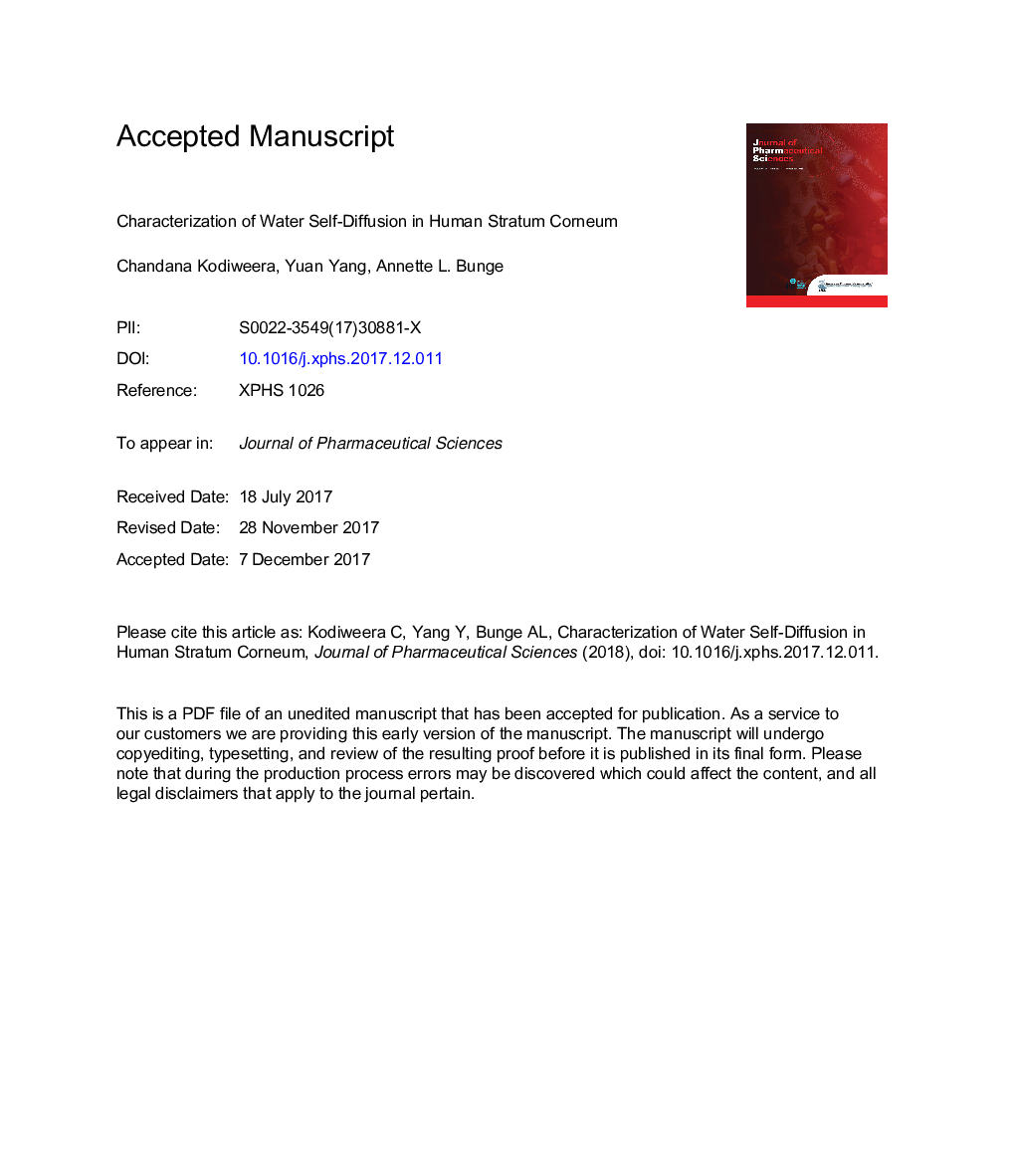| Article ID | Journal | Published Year | Pages | File Type |
|---|---|---|---|---|
| 8513411 | Journal of Pharmaceutical Sciences | 2018 | 47 Pages |
Abstract
The stratum corneum (SC) is the outermost layer of human skin and primary barrier to water loss and chemical exposure. It consists of keratin-filled corneocytes of large aspect ratio surrounded by a thin matrix of highly organized lipophilic molecules. In the presence of water, the corneocytes swell and permeability for many chemicals increases. The role of hydration and SC structure on water self-diffusion was investigated using the pulsed-gradient stimulated echo nuclear magnetic resonance technique. Proton (1H) self-diffusion, associated with water inside the corneocytes, was determined in human SC as a function of hydration, with and without lipid extraction, at 20°C to 40°C. SC layers were oriented either parallel or perpendicular to the field-gradient direction. Self-diffusion in the direction parallel to the long dimension of the corneocytes is unaffected by lipid extraction and consistent with a free-volume diffusion model. The effect of temperature corresponds with the activation energy of water in wool. Self-diffusion perpendicular to the long dimension of the corneocytes was less dependent on hydration and smaller than in the parallel direction, except at low hydration, when diffusion is insensitive to orientation. Corneocyte diffusion predicted by 2 microscopic SC models in common use are compared with our results.
Keywords
Related Topics
Health Sciences
Pharmacology, Toxicology and Pharmaceutical Science
Drug Discovery
Authors
Chandana Kodiweera, Yuan Yang, Annette L. Bunge,
